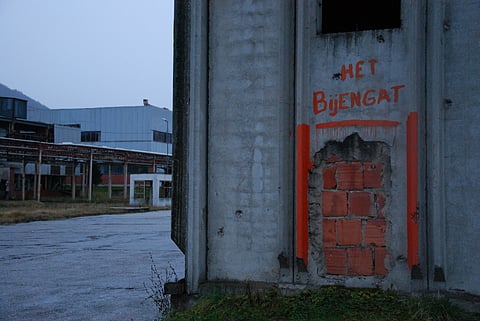

The Bosnian Genocide, often referred to as the Srebrenica Massacre, stands as one of the most egregious humanitarian crimes of the late 20th century. It was a direct consequence of the violent fragmentation of Yugoslavia during the Bosnian War (1992–1995), particularly in territories controlled by the Army of Republika Srpska.
In 1991, as the Soviet Union faced disintegration, another communist federation in Europe, the Socialist Federal Republic of Yugoslavia, was also unraveling. Economic struggles fueled a shift from communism to nationalism, exacerbating tensions among the federation's ethnically and religiously diverse republics. The death of long-time leader Josip Broz Tito further weakened Yugoslavia’s unity, leading to deepening internal conflicts. By the end of 1991, Slovenia, Croatia, and Macedonia had declared independence. Slobodan Milošević, the leader of Serbia, allowed Macedonia to secede but resisted Croatia and Slovenia’s departure, leading to a civil war. In 1992, Bosnia and Herzegovina held a referendum on independence, with 63% voter turnout and 99.71% supporting secession from Yugoslavia. This move was met with fierce opposition from Bosnian Serbs, who feared becoming a minority and declared their own breakaway entity, Republika Srpska, which lacked international recognition.
Milošević sought to establish a new Yugoslavia under Serbian dominance. With access to the formidable Yugoslav People’s Army (JNA), comprising over 1 million troops, he mobilized military support for Republika Srpska. In response, Bosnia and Croatia formed an alliance to defend their newly declared independence. Amid growing international concern, the United Nations brokered negotiations to withdraw the JNA from Bosnia. While most troops returned to Serbia, approximately 100,000 soldiers were handed over to Republika Srpska. Despite the UN-mediated agreement, Bosnia launched attacks on the retreating forces, leading to war crimes charges against Bosnian leaders.
By mid-1992, as violence escalated, thousands of Bosnians sought refuge in UN-designated safe zones, one of the largest being Srebrenica, guarded by Dutch peacekeepers. On July 6, 1995, Serbian forces attacked Srebrenica, overwhelming the Dutch troops. Facing military disadvantage, the Dutch contingent surrendered 5,000 Bosnian refugees in exchange for 14 captured Dutch soldiers. The ensuing massacre resulted in the execution of 8,000 Bosnians, where this atrocity later classified as genocide.
Between 1993 and 1995, the Bosnian Genocide case became the first to be heard by the International Court of Justice (ICJ) under the Genocide Convention. The court examined three primary questions:
Jurisdiction – Did Bosnia have the legal standing to bring the case before the ICJ given its unclear international status at the time?
Classification of Genocide – Did the atrocities in Bosnia meet the legal definition of genocide?
Serbia’s Responsibility – Was Serbia directly or indirectly responsible for the genocide?
The court’s conclusions on the three key issues are highly contentious.
First, its jurisdictional decision has been criticized for overextending res judicata, relying too heavily on prior rulings without fresh scrutiny, and narrowly interpreting its power of revision; concerns echoed by seven of the fifteen judges.
Second, regarding genocide, critics argue the court failed to consider the broader context of Bosnian-Serb atrocities as part of a larger plan for ethnic homogeneity. Others question its reliance on the absence of individual genocide convictions by the ICTY, without fully accounting for differences in legal standards or the impact of plea bargains.
Third, on Serbian responsibility, the court’s strict approach to attribution, reluctance to find Serbia complicit, and decision against reparations have been seen as overly conservative. Conversely, its broad reading of Article 1 of the Genocide Convention, suggesting a duty to prevent genocide beyond national borders, was bold—though it failed to clarify whether this duty supports universal jurisdiction over individual perpetrators. Ultimately, the court expanded the duty to prevent genocide while restricting the duty to punish it.
The contradictions in the ICJ’s Bosnian Genocide judgment suggest an effort to balance the litigation interests of both parties. While the court avoided directly implicating Serbia in genocide, it still assigned some legal responsibility, such as failing to prevent genocide. This balancing act reflects the ICJ’s broader trend of ‘transactional justice,’ seen in other cases like Oil Platforms and Avena, where rulings were structured to minimize practical consequences.
One explanation for the judgment’s inconsistencies is the court’s limited fact-finding capabilities, which led to legal innovations, such as expanding the duty to prevent genocide, to compensate for the lack of direct evidence. However, this alone cannot justify all the court’s controversial conclusions, particularly on jurisdiction, the interpretation of the Genocide Convention, and reparations. Ultimately, the judgment appears driven by institutional considerations rather than purely legal principles. While courts naturally weigh political and institutional factors, there are limits to how far the law can be stretched to maintain legitimacy. In some aspects of Bosnian Genocide, legal principles may have been compromised for expediency, raising concerns about the ICJ’s role in upholding the law versus managing political sensitivities.